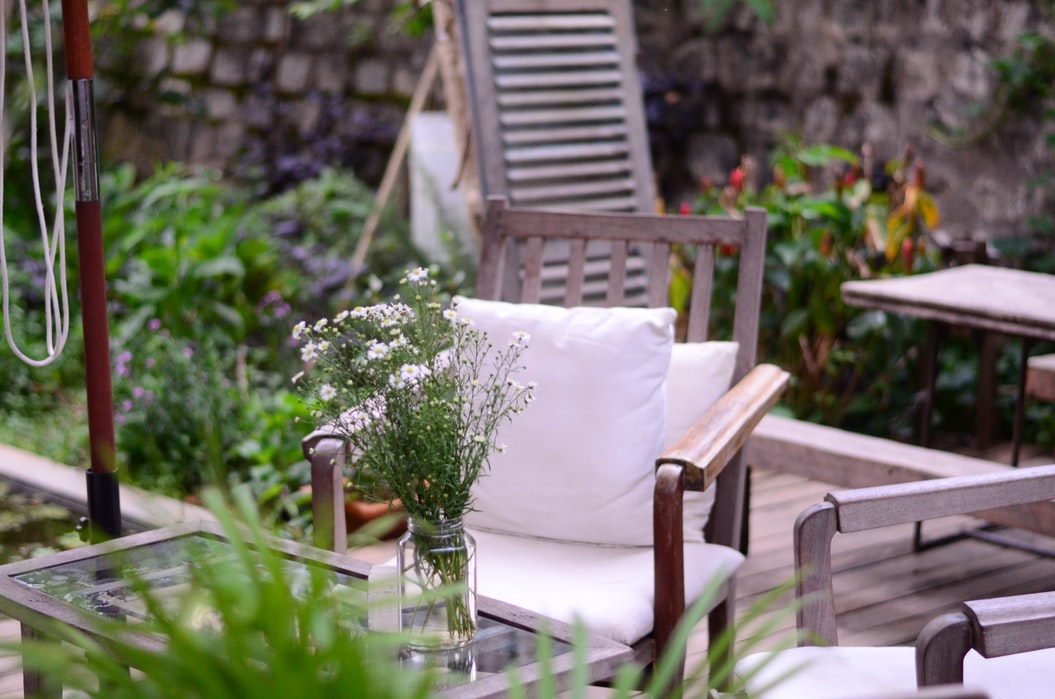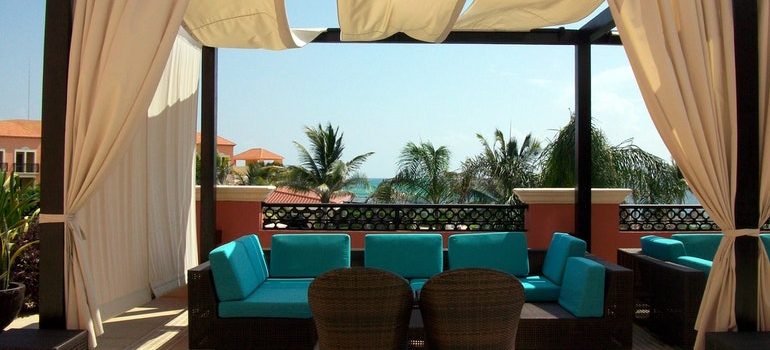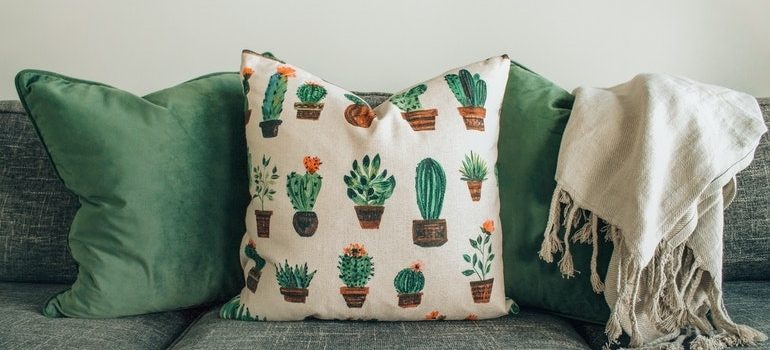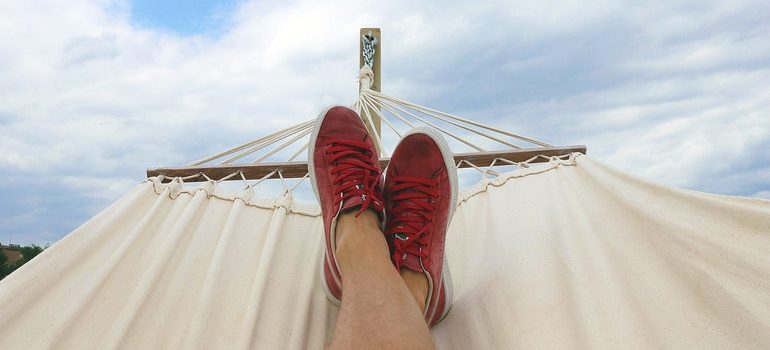Tips for storing outdoor cushions and hammocks
get a quote
Seattle’s unpredictable weather can take a toll on outdoor furniture. Cushions and hammocks, in particular, are at risk from the region’s frequent rain and high humidity. Without proper PortaBox Storage, these items can develop mold, mildew, and permanent damage. Follow the right techniques for storing outdoor cushions and hammocks, and you can keep your outdoor essentials in excellent condition, ready to enjoy when the sun reappears! Here’s everything you need to know to protect your outdoor patio items from Seattle’s damp climate.
Prep your cushions and hammocks with a deep clean
Dirt and moisture are the enemies of outdoor fabrics. Cleaning cushions and hammocks thoroughly before storage is essential to prevent mold and unpleasant odors. Therefore, try these steps for cleaning outdoor cushions:
- Vacuum or brush off loose debris, including dirt and dust.
- Mix a solution of warm water and mild soap.
- Scrub the fabric gently using a soft brush or sponge.
- Rinse with a garden hose and allow the cushions to air dry completely.
And here are the necessary steps to ensure your hammock is thoroughly cleaned and ready for storage:
- Shake out loose dirt and leaves.
- Wash fabric hammocks in a gentle machine cycle or by hand, following the manufacturer’s guidelines.
- For rope hammocks, soak in soapy water, scrub with a soft brush, and rinse thoroughly.
- Hang to dry in a well-ventilated area.
Thorough drying is essential to prevent hidden dampness from becoming a breeding ground for mildew. Even a small amount of moisture can lead to mold or unpleasant odors during the rainy months. Seattle’s overcast skies may slow drying, so consider using fans or a dehumidifier to speed up the process.

Spot and fix damage before storing
Once clean and dry, take time to inspect your outdoor items for wear and tear. Small issues can worsen if left unattended. For cushions, examine seams, zippers, and fabric for signs of fraying or damage. Repair small tears using outdoor fabric adhesive or patches, and replace broken zippers to ensure long-term durability.
Hammocks, on the other hand, require extra attention to the ropes and hardware. Weak spots, frayed cords, or rusted hooks should be repaired or replaced to avoid accidents next season. Addressing minor damage before storing outdoor cushions and hammocks extends the life of your items and also saves you from costly replacements in the future.
Find the perfect storage spot to beat Seattle’s damp weather
Seattle’s damp climate makes storage location critical. Aim for a dry, temperature-controlled environment to prevent moisture-related issues like mold and mildew. Indoor spaces such as basements, closets, or garages are a good choice. However, if indoor storage isn’t an option, use a waterproof storage box or heavy-duty deck chest to keep items dry outdoors. These storage solutions should be tightly sealed to block out moisture and pests.
If you’re short on indoor storage space, portable Redmond self storage units or pods offer a convenient solution, providing a secure and weather-resistant option to keep your outdoor cushions and hammocks protected from Seattle’s damp conditions. For added protection, consider vacuum-sealing your cushions in plastic storage bags. It reduces space and also creates an airtight barrier against humidity.

Add extra layers of protection with storage covers
Even in reputable Newcastle self storage, your cushions and hammocks need protection. Quality storage covers act as a barrier against dust, dirt, and dampness. Use breathable fabric covers for cushions to prevent moisture buildup while shielding them from debris. Avoid using plastic directly against fabric, as trapped moisture can lead to mold.
Hammocks can be rolled and placed in fabric storage bags or wrapped in a clean cotton sheet for similar protection. If you plan on storing items in an outdoor shed or deck box, double up on protection with both covers and sealed containers. This extra layer of protection helps safeguard your hammock from unexpected leaks, humidity, and pests that could cause damage during storage.
Keep your items safe with elevated and ventilated storage
To further safeguard your stored items, keep them off the ground and ensure air circulation. In basements or garages, place cushions and hammocks on shelves or pallets to reduce contact with cold, damp floors. Elevation minimizes the risk of water damage from unexpected leaks or flooding.
Proper ventilation when storing outdoor cushions and hammocks is equally important. If you’re using storage bins or deck boxes, choose ones with small vents to allow airflow. A lack of airflow can lead to stale odors and mildew, even in sealed containers.

Stay ahead of problems with seasonal storage checks
Even the best-stored items benefit from occasional checks during the off-season. Every few months, inspect your Seattle mini storage area for signs of moisture, mold, or pests. If you notice any dampness, take immediate action to dry the items and improve ventilation.
Why does this matter? In Seattle’s wet climate, even a small breach in a storage bin can allow moisture to seep in, potentially causing mold, mildew, and long-term damage. Regular inspections ensure your outdoor cushions and hammocks remain in top condition, saving you time and money in the long run.
Protect your outdoor investments with careful storage
Properly storing outdoor cushions and hammocks is not just about keeping them clean. You are preserving their quality and extending their lifespan, especially in Seattle’s challenging climate. From thorough cleaning and damage checks to choosing the right storage solutions, every step matters.
So, would you say your outdoor items are ready to face another season? If you invest a little effort now you’ll avoid costly replacements and ensure your outdoor furniture is ready to use when sunny days return. Stay proactive, and your outdoor essentials will remain in top condition for many seasons to come.
